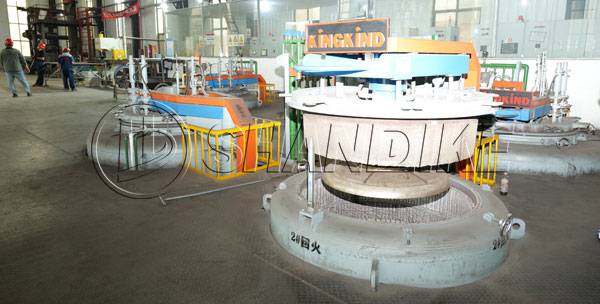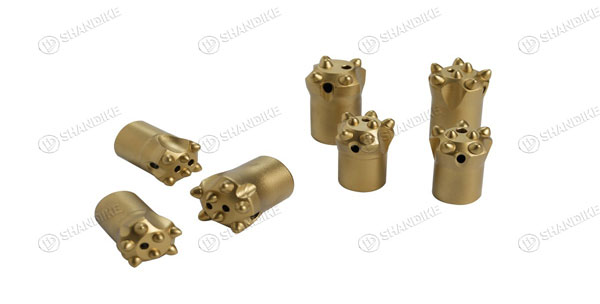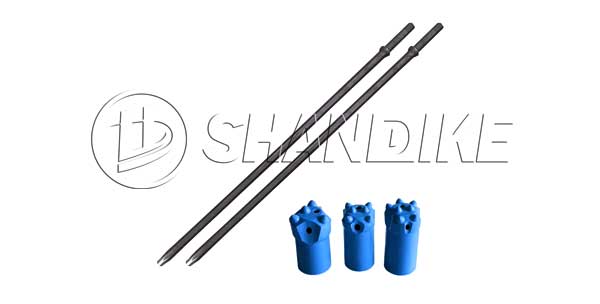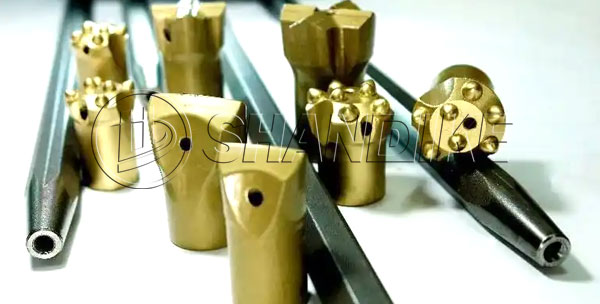Heat treatment process of drill rod
What impact does the heat treatment process of drill pipes have on their performance?

The heat treatment process of drill pipes has a significant impact on their performance, and improper treatment may lead to fracture. The following is a detailed analysis and preventive measures:
1、 The Influence of Heat Treatment Process on Drill Rod Performance
1. Strength and hardness
Quenching: Increases hardness and strength, but excessive quenching can lead to increased brittleness and residual stress.
Tempering: Eliminating quenching stress, balancing strength and toughness. If the tempering temperature is insufficient or the time is too short, the material may retain brittleness.
2. Resilience
Insufficient tempering or too fast cooling rate can reduce impact toughness and easily cause crack propagation.
Tempering brittleness (such as tempering certain steels at 300-500 ℃) can significantly reduce toughness.
3. Residual stress
Uneven cooling or phase transformation during heat treatment can lead to residual stress concentration and become a source of cracks.
4. Uniformity of microstructure
If a mixed structure of martensite and bainite appears, it may lead to local stress concentration and reduce fatigue life.
5. Wear resistance and fatigue resistance
Improper surface treatment (carburizing, nitriding) may result in excessively high surface hardness, mismatch with core toughness, and accelerate fatigue crack initiation.
2、 Measures to avoid fracture caused by improper heat treatment
1. Optimize heat treatment process parameters
Temperature control: precise control of quenching temperature (such as 850-880 ℃ for medium carbon steel) and tempering temperature (depending on material selection, such as 500-600 ℃).
Cooling rate: Use appropriate cooling media (oil quenching, water quenching, or graded cooling) to avoid cracking caused by rapid cooling.
Insulation time: Ensure sufficient transformation of the organization, such as sufficient tempering time to eliminate stress.
2. Material selection and pretreatment
Choose steel with high purity and low impurities (such as low sulfur and phosphorus content) to reduce segregation and inclusions.
Perform normalizing or annealing pretreatment to refine grain size and improve the uniformity of the microstructure after processing.
3. Residual stress management
After quenching, tempering should be carried out in a timely manner, using stress relief annealing (such as 300-400 ℃ insulation and slow cooling).
Shot blasting treatment is applied to key areas (such as threaded connections) to introduce compressive stress to counteract tensile stress.
4. Process monitoring and detection
Real time monitoring of furnace temperature uniformity using thermocouples and infrared thermometers.
Use metallographic analysis and hardness testing (such as Rockwell hardness HRC) to verify the microstructure state.
Non destructive testing (ultrasonic testing, magnetic particle testing) is used to identify microscopic cracks and defects.
5. Post treatment and surface strengthening
Perform carburizing, nitriding, or coating treatment on the surface to improve wear resistance while avoiding excessive hardening.
To avoid local overheating during subsequent processing (such as grinding), low-temperature processing technology should be used if necessary.
6. Standardization and Training
Strictly implement heat treatment process standards (such as API Spec 5DP requirements for drill rods).
Regularly train operators to ensure equipment maintenance and process stability.
3、 Typical Case Analysis
Case 1: Due to the rapid quenching and cooling rate of a certain drill rod, coarse martensite was formed on the surface, and the residual stress inside was too high, resulting in brittle fracture under downhole torsional load. Improvement measures: Switch to oil quenching and extend tempering time.
Case 2: Insufficient tempering temperature (only 400 ℃) did not completely eliminate quenching stress, and the drill rod cracked from the root of the thread under fatigue load. Solution: Adjust the tempering temperature to 550 ℃ and extend the holding time.
4、 Summary
The heat treatment process directly affects the strength, toughness, and fatigue life of drill rods. By precisely controlling process parameters, optimizing material selection, strengthening detection and post-treatment, the risk of fracture can be significantly reduced. Continuously improving processes based on industry standards (such as API, ISO) and actual working conditions is the key to ensuring the reliability of drill pipes.



